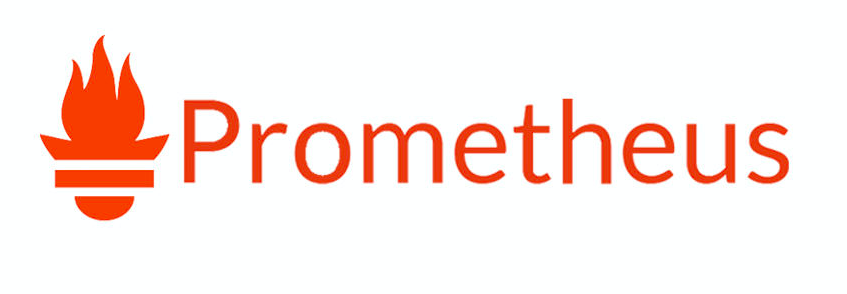In the previous article on the microservices architecture and its principles, we learned about the architectural style of a collection of loosely-coupled services structured to improve modularity. We scrutinized the key concern areas that affected the workings of a microservices and how your team can challenge those pit stops in the security of microservices.
Continuing with the microservices, let’s discuss the tools and sources that can aid the implementation of software designing techniques. This will require an operating system, container technology, a scheduler, and a monitoring tool.
If your organization is considering the enactment of microservices in your system, have you considered the best of open-source components to be used for these actions?

4 Important Tools for You!
Here is a list of techniques and available tools curated for you:
Scheduling with Kubernetes Dashboard

As containers offer the best execution environment for applications, they require a set of supporting services, such as an API server along with security measures. Complicated tasks like shifting containers on and off a server, tracking for application upgrades should be seamlessly handled.
Orchestrators of the microservices, container schedulers keep track of the application resources and ensure that they’re always running properly. With a complete view of all running applications, Kubernetes Dashboard is one such scheduler that enables developers to manage and troubleshoot them. It facilitates developers to choose and modify individual resources, including DaemonSets, Deployments or Jobs. Among many options in the marketplace, most IT organizations make a tough choice between two alternatives, Swarm or Kubernetes where the later appears to have built a larger ecosystem of vendors.
Kubernetes is said to draw its inspiration from Google’s internal container management tool and is now directed by the Cloud Native Computing Foundation.
Prometheus for Monitoring

In a highly distributed topology, it is difficult but crucial to monitor the workings of an application. In order to address the microservice monitoring in a better way, the traditional systems (static application environments with a low number of nodes) were modified. Yet, they fail to fill the void in complex real-world environments. Therefore, an open-source solution, Prometheus was designed by an ex-Google engineer.
The tool allows visualizing monitoring information using a graphical interface and supports time-based tracking for anomalous patterns to be detected. With an easy query language, Prometheus can gather germane monitoring information too. It is an open-source tool with a multi-tiered system designed to straddle both Kubernetes and Docker. Few significant features of Prometheus include console templates, time series storage, data collection, alarms, and event management. As a centralized hub for collecting metrics data, it was also designed to provide convenience to operators overwhelmed by an excess of information.
Docker Contains it all

Containers, a lightweight alternative to a virtual machine, lead to value-creating processing of the applications and are the future of carrying out operations. They require limited server resources to run the execution environment as compared to executing application code.
However, in the open source pool, there’s only one feasible option, Docker, which has become a go-to option for organizations now. The tool enables the application components to initiate service within milliseconds and adjusts resources in response to demand, rapidly.
Operating systems with micro-Linux providers
Acting as a deployment unit and a self-contained execution environment, Linux containers can orchestrate major services like storage, networking, and security. This dependency leads to a major question, which one would be a good choice for the foundation of your application? Some obvious choices like Red Hat and Ubuntu are full-featured OSes with too many unnecessary functionalities which can surface more attack by hackers. On the other hand, CoreOS is a tool that focuses on security.
Meanwhile, Linux providers came up with container-specialized tools, like Atomic by Red Hat is a stripped-down variant of its flagship RHEL product. Ubuntu included LXD, a container-oriented hypervisor, with its core product
Some other open-source tools…
While those were some major tools, these are other open-source applications that can deliver the same results for various other functions.
Sysdig Monitor
Sysdig is a great fit as a unified open source agent.
To attain a service-level view of metrics, command histories and policy violations, Sysdig is a great fit as a unified open source agent. The tool helps in ensuring that a specific pod runs on all nodes in a cluster and provides a more code-centric view of the application. Sysdig operates in a way to effectively unify and provides both a high-level infrastructure view and a Kubernetes-centric view. The latest version of 2017 lets Sysdig Cloud gather more information from microservices infrastructures.
CAdvisor
In amalgamation with other container runtimes, CAdvisor works wonders. It collects basic resource information, such as CPU percentages, memory, file system, and network use statistics with auto discovering all containers in a node. The real-time data collection makes it cut the list but it lacks the storage capability. However, it offers a built-in web UI for data visualization and exposes a remote REST API endpoint for evaluating metrics.
Heapster
Heapster is a key component of all Kubernetes monitoring.
Demanding time investment and resources for configuration, Heapster is a key component of all Kubernetes monitoring. It helps in aggregating the tracking and event data across a cluster. Being an open-source tool, it offers flexibility and durability in a package with detailed trending and analysis capabilities.
Heapster facilitates grouping and labeling of information by the pod that makes it easier for the tools to perform analyses and reviews. It further supports different back ends that include InfluxDB, Elasticsearch, and Graphite.
Retrace
When it comes to pinning down the exact location and time for the error, microservice architectures can pose challenges. Therefore, Retrace is a SaaS tool that identifies individual microservices causing issues. Besides this, the tool ranges in features like tracking requests, logging method call stacks and database queries and monitoring errors and logs.
Way forward
And that’s a wrap! Among a plethora of options, we have established one solid fact that open-source solutions are considered most vibrant and supportive when it comes to migrating microservice application architecture. Further, they provide a cost-effective way to deliver the components and deliver your microservice applications.
Which one is your favorite among them and why? Let us know in the comments below or reach out at [email protected].
Subscribe
Related Blogs
Exploring Drupal's Single Directory Components: A Game-Changer for Developers

Web development thrives on efficiency and organisation, and Drupal, our favourite CMS, is here to amp that up with its…
7 Quick Steps to Create API Documentation Using Postman

If you work with API , you are likely already familiar with Postman, the beloved REST Client trusted by countless…
What is Product Engineering Life Cycle?

Imagine constructing a house without a blueprint or a set of plans. It will be challenging to estimate the cost and labor…




